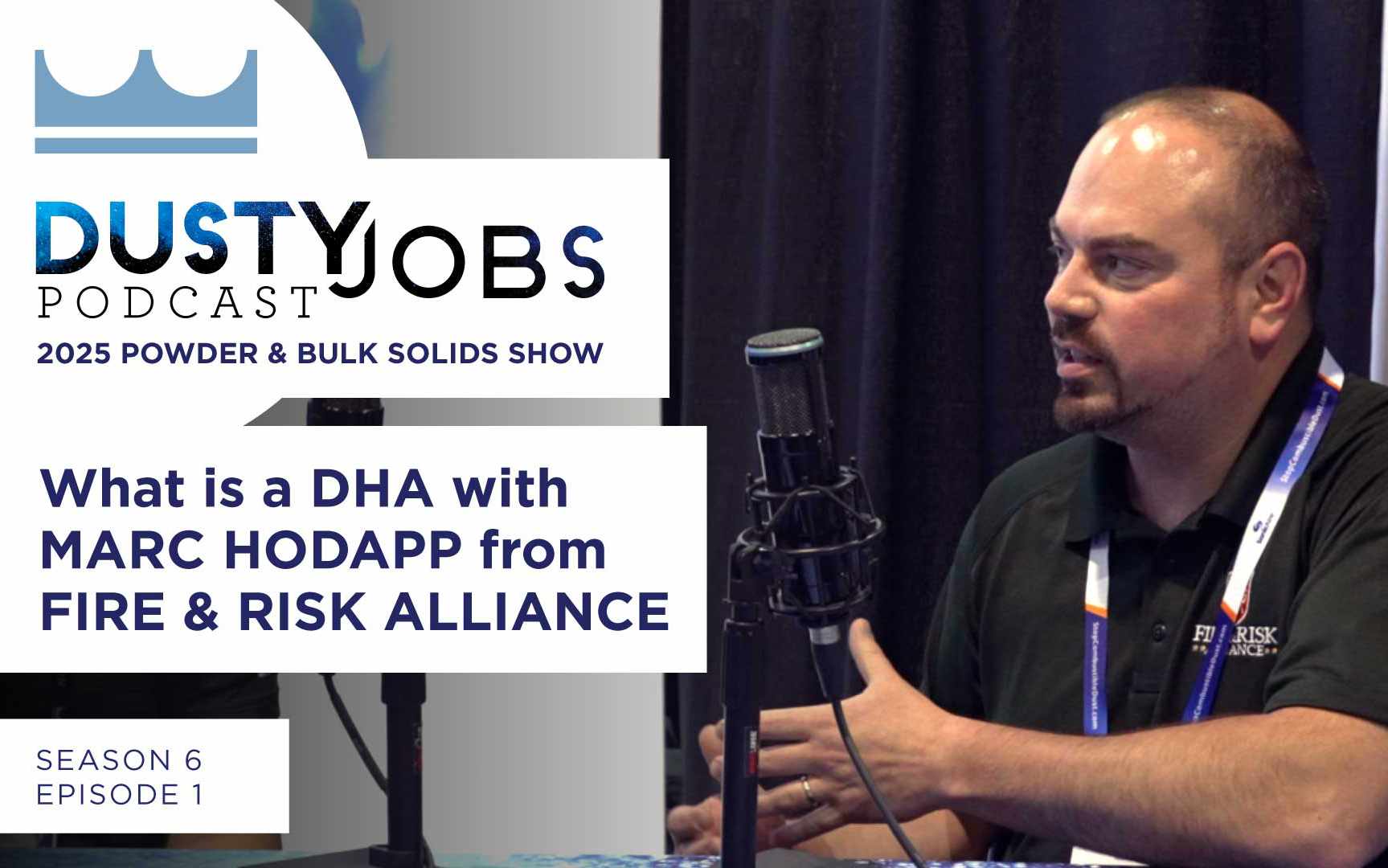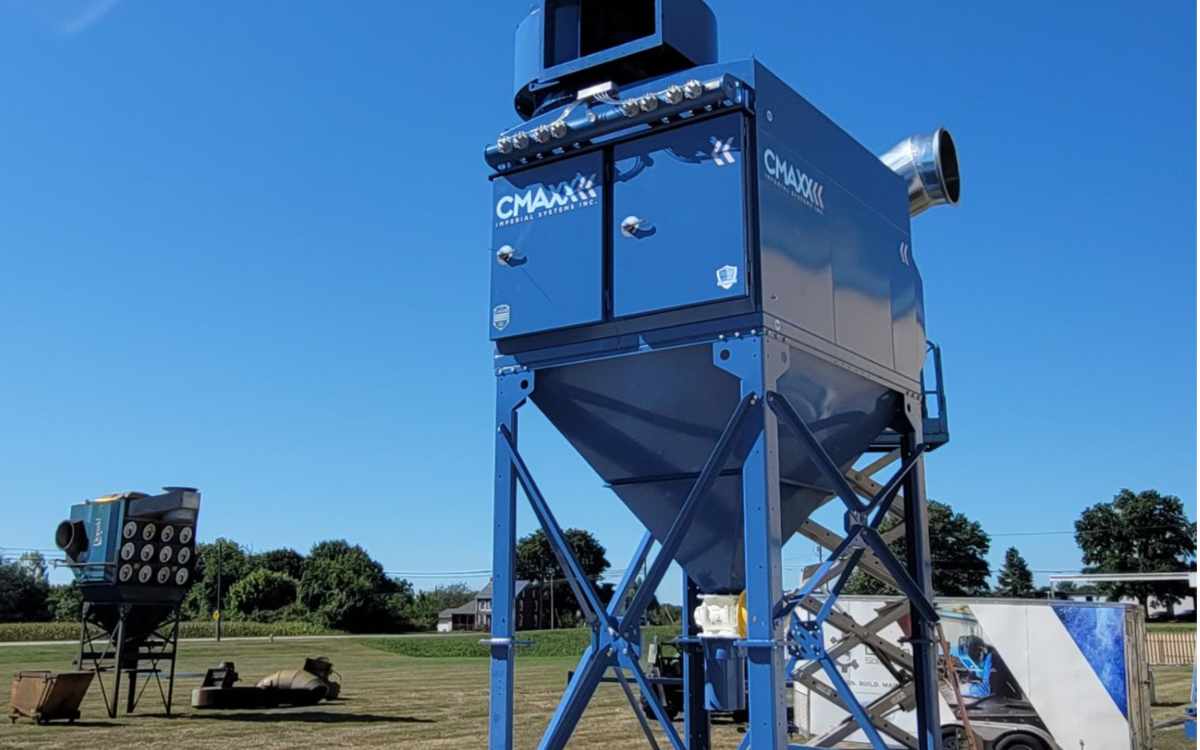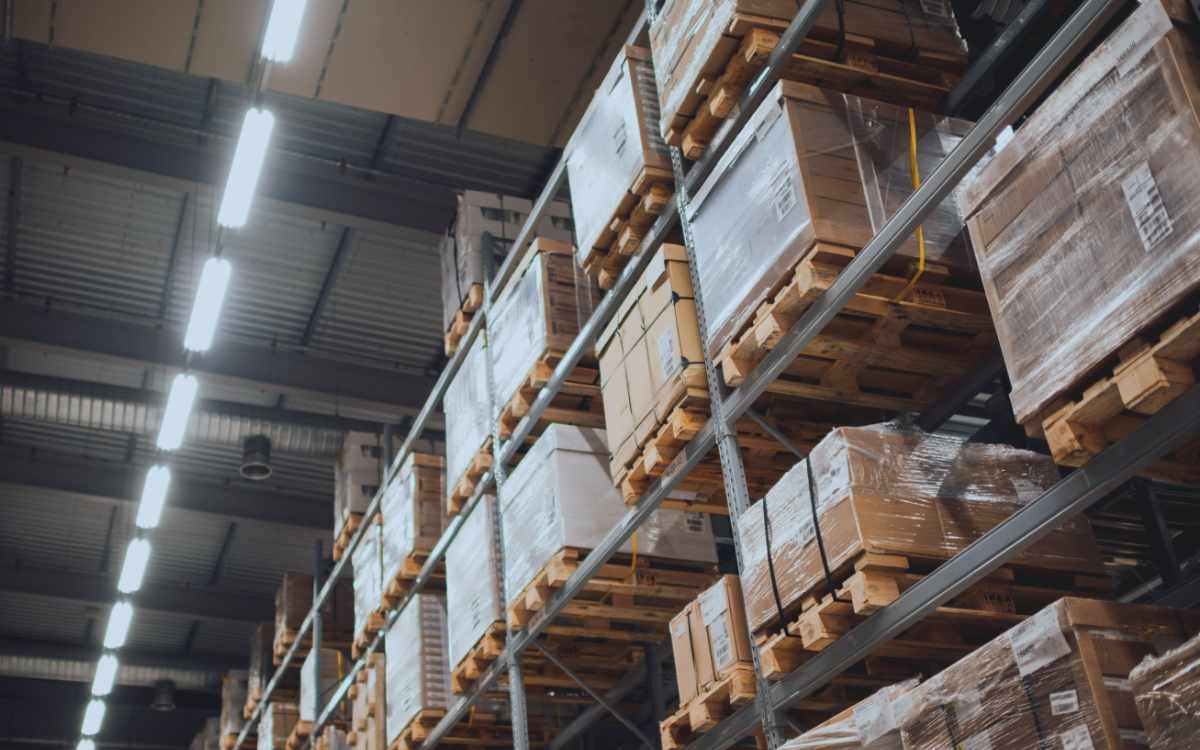In this episode of the Dusty Jobs Podcast, Donovan talks with Tomm Frungillo, our Director of sales and marketing. In his prior jobs Tomm talks about how he was involved in the Mining industry to help with dust collection. He talks about how these giant pit mines operate and deal with hazardous dust.
Narrator: Welcome to the Dusty Jobs Podcast from Imperial Systems. Industry knowledge to make your job easier and safer.
Donovan: Hello and welcome to another episode of the Dusty Jobs Podcast. Today we have Tomm Frungillo joining us again. How are you doing Tomm?
Tomm: Great Donovan, how are you?
Donovan: Good! Glad to have you on again this season. So Tomm, tell us about your role here at Imperial, and then we’ll get into what we’ll be talking about today.
Tomm: Yeah! My role is Director of Sales and Marketing. It’s kind of a role I’ve been doing for a long time within the industry, here at Imperial Systems for four years now–just about four years next month. We’ve had a successful four years since I’ve been here, starting before I was here, with growth. It’s been a great year last year, and this year is going fantastic.
Donovan: And you still help out with sales, right? You help cover the regional reps with issues or things that come up?
Tomm: I do. I help work with all of our territory managers, sales engineers, and aftermarket. And then I have my own territory out in the western part of the United States and down in Latin America.
Donovan: Not only overseeing things, but also hands-on. You’re not removed from what’s really going on in the industry at all.
Tomm: That’s the only way to do it. Gotta keep in it.
Donovan: That’s why we love having you around, Tomm, because you do such a great job with all that…
Tomm: Thanks.
Donovan: But, also, you have a pretty strong history in the mining fields. You helped out with dust collection and mining for… well I don’t know. How many years was that?
Tomm: With a previous company I actually did all our focus markets. So these were things we got into that required a little more specialty within the dust collector itself, or within the dust collector system itself. One of those was mining: in Latin America, the southwestern United States, and Canada.
Donovan: Mining is a big industry. They’re doing it everywhere. So today that’s what we’re going to be talking about. We’re going to touch a little bit off on mining and talk a little bit about your experience, talk a little bit about how Imperial can help. So for you, personally, what’s been your experience in mining. What have you seen? Where have you been? What’s happened there? I’d love to hear a little bit of your story of your mining experience.
Tomm: Well, we at Imperial Systems and other companies I’ve been with have focused on above-ground mining. I think most people think with mining, you’re in a tunnel and you’re underground, and of course those exist. But we focus on the above-ground mining. And that creates a huge amount of dust and air pollutants as they mine, and as they process the ore. And so that’s where we come in, providing equipment to control that dust, air pollution, and processing. There’s open pit mines all over the world, as you mentioned. It’s heavy in South America: Chile, Peru, Brazil, Columbia, and areas like this. Plenty in the United States–mostly southwestern United States–for the ores that we would go after. Central and western Canada. Over in Indonesia, down in Australia, China… throughout the world, there’s large open-pit mines.
Donovan: Anywhere where there’s something valuable that we could use, we get it out of the ground. They’re digging.
Tomm: Absolutely.
Donovan: So we’re not talking about Snow White and the Seven Dwarves with the coal hat on. Not like that.
Tomm: Not so much.
Donovan: So if someone has never been to a mine before, and you would roll up to a mine site, what would we be looking at? A big hole in the ground with roads?
Tomm: A massive, massive hole in the ground. Usually with staggered, large steps where they start and they continually go down further and further and further until they get to a point where they can’t go anymore. But they’re cutting and blasting and pulling this ore out of the earth. In an interesting way–some people may look at it and think it’s terribly ugly because we’re somewhat destroying that piece of the planet. Others look at it as a beautiful thing. Because the things that we’re mining go into things that we use every day, and it’s got to come from somewhere. So if it’s done right, it’s not necessarily a terrible thing. A lot of these mines are in beautiful places. They’re remote, but they can be a beautiful place if you look at it in the right way.
Donovan: And I’m sure a lot of these places–I’ve seen a lot of surface mining around Pennsylvania–and as long as the recovery is done well, you might not know anything was there in the first place.
Tomm: These are so massive, though, that they’re going to be there for a long time and you’re not going to hide them down the road. So maybe that’s some of the negative about it. But it’s part of the things that human beings have to do. We have to take care of our natural resources, but hopefully use them in the right way because they go into all the things that almost every human being utilizes in their life.
Donovan: So, what are some of the mines you’ve been to in the past. What were they digging there?
Tomm: We focused previously, and even with Imperial Systems, we’ll focus on the copper mines. Copper is huge. It goes into a lot of different components and products. So the copper mines–I’ve been to many mines in Arizona, and in Nevada, and in British Columbia, and in Chile, and in Peru, and in Mexico. Also gold mines. Some silver. The precious metals… but copper is the go-to mine for what we focus and concentrate on.
Donovan: We can really help out a copper mine.
Tomm: Absolutely.
Donovan: So you go to a copper mine. There’s a hole in the ground. They’re pulling out copper. What’s the next step? What’s the next thing that happens? Is that where the dust really starts to get created, or…?
Tomm: Well, the dust is created where their process is. They’re taking out ore, and then they’re processing it down. It goes through a primary, a secondary, and a tertiary crushing. They’re screening plants. There’s mills. There’s ball mills and things like that. And especially the crushing side and the screening side all requires dust collection.
Donovan: So they’re pulling this ore out of the ground. They’re bringing it up to the top of the pit. And then, they don’t want to truck all of that somewhere else, right? So right there on site, they’re starting to process that product, and get what is the actual product they need out of it–the useful product–on site.
Tomm: Correct.
Donovan: So that’s where it goes into a mill or a grinder… am I saying all this correct?
Tomm: That’s correct. It goes into a crushing, and then screening, and then conveying, until it gets to a product that they create there that is sent off for further processing. It’s massive. The vehicles that are there… you mentioned roads. There’s roads all over the mines. These roads were made for trucks that are as big as this room.
Donovan: You can’t see it, but we’re in a pretty big room.
Tomm: And height-wise, width-wise, length-wise–that’s how big some of these trucks are, and even larger.
Donovan: I think I’ve seen some of those tires go down the highway. They’re like ten foot tires.
Tomm: Yes. Yeah, they’re massive. Very expensive. Very heavy duty. There’s a lot of maintenance that goes into these things, as you can imagine. If you go to some of these mining shows–they have a lot of these mining trade shows out in Las Vegas and other places–you walk around there in awe if you’ve never seen it before because of how huge these pieces of equipment are.
Donovan: The Tonka trucks, right? We’re talking about Tonka trucks, but big Tonka trucks.
Tomm: Slightly bigger than the old Tonkas that we used to play with, yeah. But that’s what they look like. It’s potentially a very dangerous place, because of the fact that these things are riding around and they’re doing a job. So if you’re there visiting to analyze or to help assess and see what’s needed, there are very strict rules and regulations through MSHA that you have to go through and get trained on before you can… you don’t want to be out in an open pit mine not knowing what you’re doing or where you’re going. These trucks can run over a pickup truck and not even know it.
Donovan: Oh wow.
Tomm: Not even know it. And that’s happened, unfortunately.
Donovan: So it takes a truck that big to bring that much material up, and it starts to get processed. And is that where a dust collector comes in? So they’re starting to take all of these things and they’re crushing them, and then that’s where all this by-product is coming off.
Tomm: Yeah, pretty much. These trucks dump and then this ore is dumped into an area of the primary crusher. These are often gyratory crushers. You got a big hole, and the ore falls in in big pieces and this thing gyrates and turns. It’s all size reduction, all the way down the line, until you get to a product that you can actually process.
Donovan: So during each step of that process there’s dust that’s created.
Tomm: A massive amount.
Donovan: And that’s where we, as Imperial Systems, with a dust collector, can help to cut down on that process, so people aren’t breathing that in.
Tomm: Yeah, and that it’s not being exposed into the environment that much. Years ago they didn’t worry about it, especially because these are a lot of remote areas. But a lot of… in the EPA and similar in Canada. And now in Latin America for years now they’ve been cracking down on that so that you cannot create all this particulate which is released into the environment. You have to control it. And they test it and make sure you’re doing it right and all these things. So it’s a very important part of the process.
Donovan: So it’s not only helping the health of those workers that are in close proximity of the equipment, but also basically everybody else in the world, and the environment which we all depend on and enjoy. So, when you come to a mine site, how could we look at that and help people? How can we help those employees? How can we continue to help the environment?
Tomm: Well usually the way it works, there’s an engineering firm involved. So if they’re going to put in a new mine, or if they’re replacing some of the equipment that’s already on a mine, like in a lot of industries they’ll come out with a spec that says okay, we know how much air volume we need, we know what air permitting we need to meet–the qualifications for that, we know if we have space constraints and where we want this thing to go. We come and say, “Okay, we can meet all that. We can help you there.” Of course, put proposals together. Most of the time… As you know, as Imperial Systems, we can do everything from build the equipment, to install the equipment, to service the equipment. Out there, it’s generally just providing the equipment. They’ve got people on site there that are capable of installing pieces of equipment and process equipment much more complicated than a dust collector.
Donovan: Oh, I’m sure. They have a lot of stuff going on there.
Tomm: So we won’t get involved too much in that side of it.
Donovan: Well, we could if someone needed us to.
Tomm: We could. As we know, we have the capability to do that. But it’s usually just building and providing the equipment to meet the requirements that they have.
Donovan: Now, in this process, the dust that’s coming off–does that still have some value? Or is that usually just a refuse dust?
Tomm: Generally refuse. It’s a very fine particulate, which is why it creates a problem. Very respirable. Bad for the environment in that it’s a very fine–PM1o, PM2.5–that’s what the industry talks about. That’s what you’re getting into. That’s what we’re collecting.
Donovan: So Tomm, they have these giant equipment all over the mine, right? These trucks are driving around. Those have to be creating dust on their own, just blowing around these mines. Right?
Tomm: Yeah. And there’s a couple of ways that we address that, or that they address it and we can help them. One is, they do constantly put water spray on the roads. They call it dust control. It is dust control, but it’s a misting dust control for roads. And they do a lot of that and it’s needed. Because a lot of these places are in places that don’t get a lot of rain. So they have to make their own rain. So that’s one aspect is, yes, you can imagine there are huge power supply requirements–transformer vaults–and then a lot of motor control centers that are operating all this equipment, this processing and grinding equipment and pulverizing equipment. And those are always in large rooms–transformer vaults. And one of the things we do is provide dust collectors on the outside of those rooms that take ambient air, clean it, and put it into those rooms to keep positive pressure in those rooms and keep the dust out.
Donovan: So this is not a dust collector that’s collecting dust off a process. It’s providing clean air into a space that needs to be eliminated. It can’t have any dust in it.
Tomm: Exactly.
Donovan: And I can imagine as things are getting more automated, there’s robotics involved and computers… I mean how often do they tell you to blow out your computer at home if it starts acting a little funny? You know you got to clean it out. I can only imagine with giant trucks running around, digging up the earth, that’s got to be creating something that’s just…
Tomm: Well, right. And then you have these electrical rooms, that there’s a possibility if dust gets in there, of arc fires and those sorts of nasty things. So you want to keep that dust out of there. And there’s no real way to do that effectively. Over the years they used a lot of HVAC type filters to try to process that air and keep it clean. There was so much dust, that those HVAC filters get overwhelmed, and there’s a huge cost to replace those. Sometimes daily, certainly weekly. So you put a dust collector in there–that’s cleaning itself and keeping that heavy load of dust to a minimum–and then you take that clean air that’s coming out of it. Pressurize that building. Keeps the dust out.
Donovan: Ah, so you’re putting a positive pressure on it, so you’re actually trying to keep the air out. It’s making it almost like it’s an air force field.
Tomm: Yeah. You’ve probably experienced it when you open a door, and you get kind of a feel of air that’s coming out to you? That’s positive pressure in that room.
Donovan: Where it’s really hard to open the door…
Tomm: And then that’s negative of course. And in this case, you want positive, to keep the dust from coming in. So that’s an important aspect of it. We do a lot of that in mining. In other industries too, but in mining, out there, it’s really important.
Donovan: Yeah, because if an HVAC system goes down, I can only imagine how much time that takes for someone to change the filters, make sure they’re running right… and then if your HVAC unit goes down, you have no air circulating in those buildings. And then what are you gonna do then? Prop open the door? You don’t want to be propping open the door on the job site to get some air circulating in there, put a fan on it…
Tomm: No. Not recommended.
Donovan: So then if you have a positive pressure dust collector on that, it at least keeps the air flowing through there. It might not be one hundred percent conditioned air. But it’s something.
Tomm: We’ve even tied it together with conditioned air. There is a way to do that. But oftentimes, they will condition it, and we will keep air going in there that keeps it pressurized, positive flow, and keep that dust away from those controls and transformers.
Donovan: And then if you already have these units on other parts of your process, why not just have all the same filters?
Tomm: Right.
Donovan: You have one unit. You know how they all service. You can have all the same filters. I can imagine that’s got to help the maintenance guys out; they’re just knowing how to work on one piece of equipment as opposed to trying to figure out everything.
Tomm: Yeah, and as you know, we supply cartridge filters for all makes of dust collectors. So we can certainly supply them the hardware, the equipment to do this. But if they already have something out there already, usually we can supply the filters that go in those too.
Donovan: That’s true. We can help you out with any part of the process that you need there.
Tomm: Absolutely.
Donovan: So, if someone’s out there right now working at a mine, or looking at upgrading some equipment in a mine, or designing a whole new process for a mine… we can help out with all that, right Tomm?
Tomm: We certainly can. And the beauty of our equipment–as you know, mining is a very heavy-duty, robust, harsh environment–and so the fact that we make our equipment standard is very heavy duty, standard powder coated, standard components that can take that kind of harsh environment… it lends itself to what we do.
Donovan: Oh, yeah. At Imperial, we build things that are able to hold up to the elements and then handle some abuse. So, if there’s anybody out there listening and they’re just getting into mining, or they’re new on a job site, would you have any advice for them? Just to watch out for their personal health? What would you say?
Tomm: They have a whole selection of PPE that most of these people have to wear, depending on the process of the job that they’re doing. So those are all controlled by the mine site themselves, and if those people don’t comply with a lot of those operating parameters and controls, then they usually get asked to leave. So they’re doing things, oftentimes, proper to begin with. But when they’re creating these massive amounts of dust clouds by the process, then that’s when we come in and provide the equipment that further helps them stay safe and healthy and it helps the environment stay safe and healthy.
Donovan: Well this is a great intro into mining, and what we can do to help out. I don’t know if you have anything you want to follow up with or say?
Tomm: Nothing in particular, other than, as you mentioned, I firmly believe we have the best equipment in the industry to address these mining dust problems. And we look forward to helping anybody we can, whether it’s the engineering side, whether it’s the end-user side, or anywhere in between, in solving those problems and helping people stay healthy and the environment stay healthy.
Donovan: Sounds good. Tomm, I just wanted to say thanks again for coming on. And everyone out there, if you want to learn more about Imperial Systems, you can follow us on Facebook, Instagram, LinkedIn, YouTube, TikTok… we have just about every social platform out there. Appreciate you guys listening, and I just want to say stay healthy, and stay safe, and we’ll catch up with you again next time.
Narrator: Thanks for listening to the Dusty Jobs Podcast. Breathe better, work safer.









